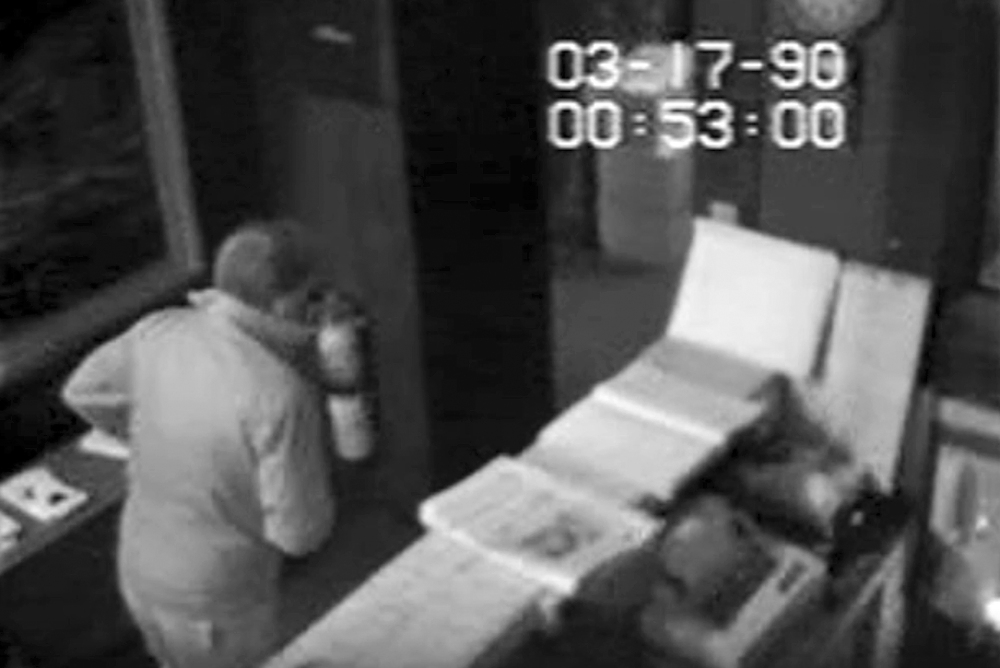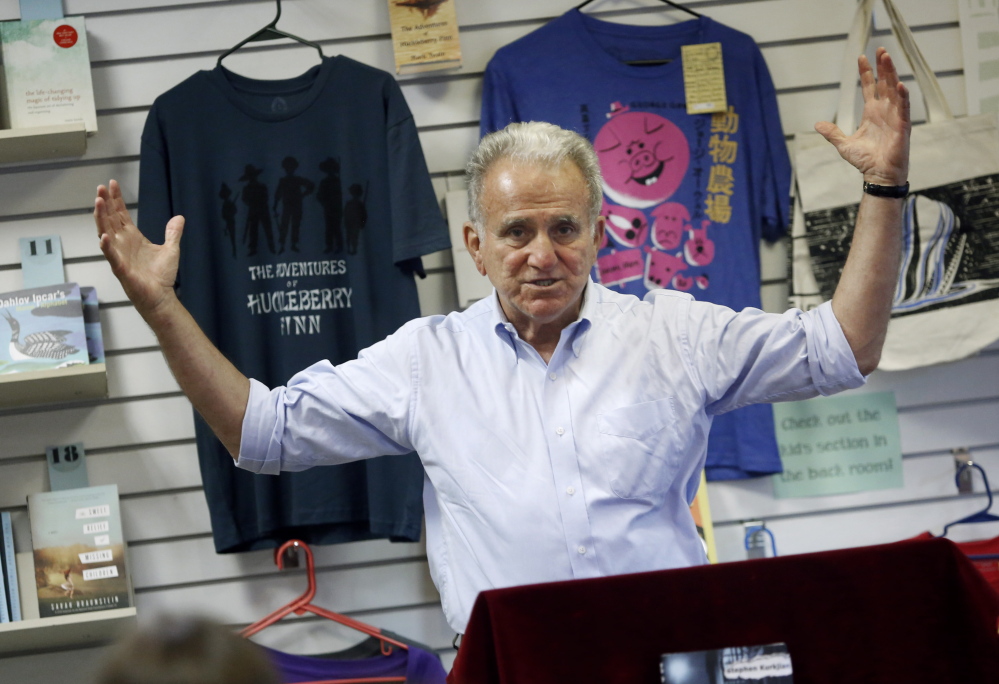On the same day that Boston Globe investigative reporter Stephen Kurkjian appeared in Portland to promote his book about one of the greatest art thefts in history, federal law enforcement officials released new video surveillance footage they hope will help them solve the 25-year-old case.
Kurkjian, a veteran Globe reporter and a founding member of its Investigative Spotlight Team, has been investigating the theft of 13 pieces of art – worth at least $500 million – from Boston’s Isabella Stewart Gardner Museum for nearly 20 years.
His book, “Master Thieves, The Boston Gangsters Who Pulled Off the World’s Greatest Art Heist,” was published this year. It was based on interviews with mob bosses, gang members, their wives, girlfriends, family members, lawyers, police officers and other reporters.
The surveillance footage “is the biggest, most hopeful development since I began working on this case,” Kurkjian said during a book promotion Thursday evening at Longfellow Books in Monument Square.
Though the surveillance video, which was released by the U.S. Attorney’s Office in Boston on Thursday, does not show the person’s face, it seems to prove that the same security guard who claims he mistakenly let the thieves into the museum at 1:24 a.m. March 18, 1990, also allowed an unauthorized individual to enter the museum just 24 hours before the theft occurred.
U.S. Attorney Carmen Ortiz said in an interview that the theory of a dry run for the robbery “makes sense,” but is only speculation at this point. “The speculation is with reason, but we don’t have any specific information that that’s what happened,” she said.
Authorities hope the never-before-seen video will spark leads to help recover the 13 pieces of stolen artwork.
The low-resolution video – captured by museum security cameras – shows a security guard appearing to hit an intercom button to grant access to a man who can be seen in the museum’s reception area about 12:49 a.m. on March 17, 1990, almost exactly 24 hours before the heist.
The man is also seen getting out of a car matching the general description of one reported to be parked outside the museum minutes before the theft. He uses the same rear entrance as the thieves.
“Over many months we have engaged in an exhaustive re-examination of the original evidence in this case. Our aim has been to ensure that all avenues have been explored in the continuing quest to recover these artworks,” Ortiz said in a prepared statement.
Ortiz said officials are hoping the public may be able to help authorities identify the unauthorized visitor or the car seen in the video.
“I’m very hopeful that it will generate information that can lead us back to our paintings,” said Anthony Amore, the museum’s director of security.
There has been no explanation yet as to how long investigators have had the surveillance image or – assuming they’ve had it since 1990 – why the evidence hasn’t been released before now.
However, Kurkjian said the surveillance image raises an even larger question in his mind about the museum security guard. Kurkjian said the same security guard let the robbers into the museum and allowed the unauthorized person to enter the museum 24 hours earlier.
Kurkjian, who said he interviewed that security guard in 2005, 2007 and 2014, said the guard has denied any involvement in the art heist, telling Kurkjian that it was “negligence” on his part.
Kurkjian told the audience at Longfellow Books that he tried to reach the security guard on Thursday, but the guard has not returned his phone calls.
“Not until today do we have any certain evidence that would indicate he has a lot of explaining to do,” Kurkjian said.
Authorities said the guard let two men, dressed as Boston police officers, into the museum on March 18, after telling him they were investigating the report of a disturbance.
Against museum policy, the guard allowed the men into the museum. The thieves handcuffed the museum’s two guards on duty and put them in separate areas of the museum’s basement.
No weapons were seen during the robbery and no panic button was activated. The video surveillance footage from the night of the robbery was removed by the thieves.
No one has ever been charged in the heist.
Kurkjian said the robbers – he referred to them as “thugs” – “wreaked havoc” in the museum, breaking glass frames and cutting the canvas on the back of the paintings. They stole 13 paintings, including Vermeer’s “The Concert” and Rembrandt’s “The Storm on the Sea of Galilee.”
Kurkjian said he is not sure if the paintings will ever be recovered. In 2010, an FBI agent told him the agency had not had “one proof of life sighting” of the stolen artwork.
Kurkjian, whose father was an artist and a supporter of the museum, said the paintings have not been sold on the black market. He said the person or persons who have the paintings should relinquish them since their chances of cashing them in for money are remote.
A $5 million reward has been offered by the museum for information that leads to the recovery of the stolen artwork in good condition.
In 2013, authorities said investigators believe they know who the thieves were, but they would not identify them.
They said the robbers belonged to a criminal organization based in New England and the mid-Atlantic states and took the art to Connecticut and the Philadelphia region in the years after the theft. The paintings were offered for sale in Philadelphia about a decade ago and have not been seen since, the FBI said at the time.
A resident of Boston who grew up in Dorchester, Massachusetts, Kurkjian has won more than 25 national and regional awards, including sharing in three Pulitzer Prizes.
Staff Writer Dennis Hoey and The Associated Press contributed to this report.
Send questions/comments to the editors.





Success. Please wait for the page to reload. If the page does not reload within 5 seconds, please refresh the page.
Enter your email and password to access comments.
Hi, to comment on stories you must . This profile is in addition to your subscription and website login.
Already have a commenting profile? .
Invalid username/password.
Please check your email to confirm and complete your registration.
Only subscribers are eligible to post comments. Please subscribe or login first for digital access. Here’s why.
Use the form below to reset your password. When you've submitted your account email, we will send an email with a reset code.